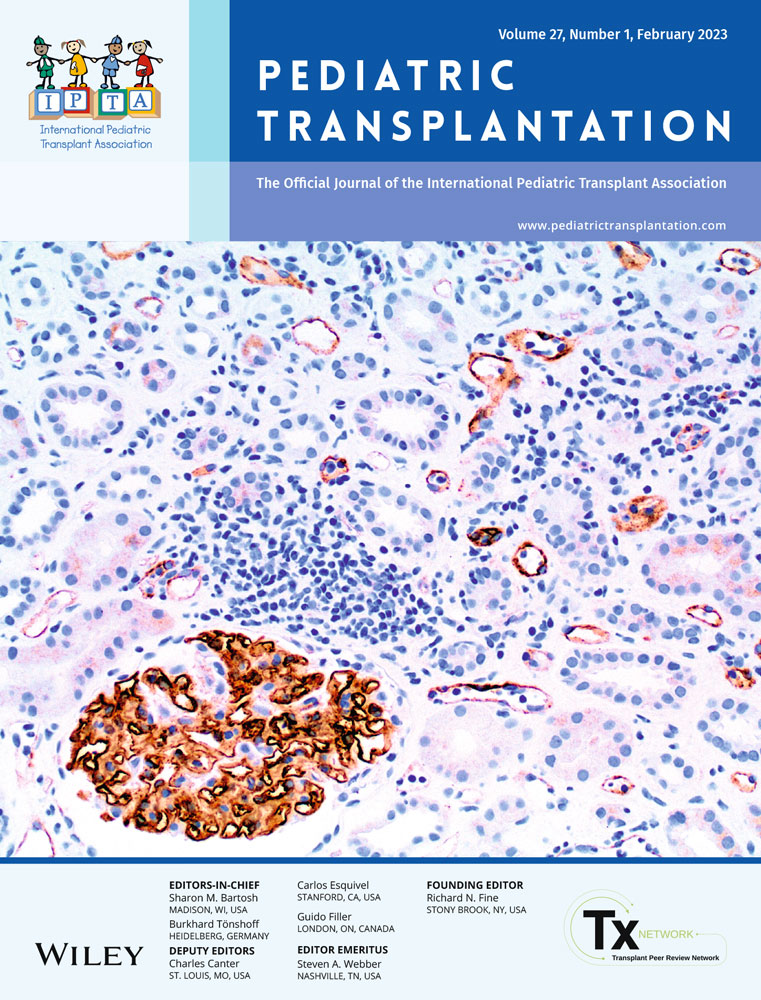Biological abdominal wall expansion in pediatric liver recipients after transplantation with large-for-size organs
Abstract
Background
After pediatric split liver transplantation, intra-abdominal loss of domain due to large-for-size left lateral grafts is a frequent problem for fascial closure and potentially leads to reduced liver perfusion and abdominal compartment syndrome. Therefore, delayed fascial closure with the use of temporary silastic meshes and reoperation or alternative fascial bridging procedures are necessary.
Methods
Between March 2019 and October 2021, biologic meshes were used for abdominal wall expansion in 6 cases of pediatric split liver transplantation. These cases were analyzed retrospectively.
Results
One male and 5 female children with median age of 6 months (range: 0–57 months) and weight of 6 kg (range: 3.5–22 kg) received a large-for-size left lateral graft. Graft-to-recipient weight ratio (GRWR) was 4.8% (range: 1.5%–8.5%) in median. Biologic mesh implantation for abdominal wall expansion was done in median 7 days (range: 3–11 days) after transplantation when signs of abdominal compartment syndrome with portal vein thrombosis in 3 and of the liver artery in 1 case occurred. In 2 cases, bovine acellular collagen matrix and 4 cases ovine reinforced tissue matrix was used. Median follow-up was 12.5 months (range: 4–28 months) and showed good liver perfusion by sonography and normal corporal development without signs of ventral hernia. One patient died because of fulminant graft rejection and emergency re-transplantation 11 months after the initial transplantation.
Conclusions
Biologic meshes can be used as safe method for abdominal wall expansion to achieve fascial closure in large-for-size liver transplant recipients. Usage for primary fascial closure can be considered in selected patients.
CONFLICT OF INTEREST
The author Frank W. Brennfleck has received research grants from the company 3M and is consultant for 3M and TELA Bio, Inc.; the author Birgit Knoppke is a member of the pediatric liver transplant working group (Germany); the authors Markus Goetz, Maria Jurczyk, Dirk Grothues, Henrik Junger, Michael Melter, Hans J. Schlitt, and Stefan M. Brunner declare no conflicts of interest.
Open Research
DATA AVAILABILITY STATEMENT
The data that support the findings of this study are available from the corresponding author upon reasonable request.




